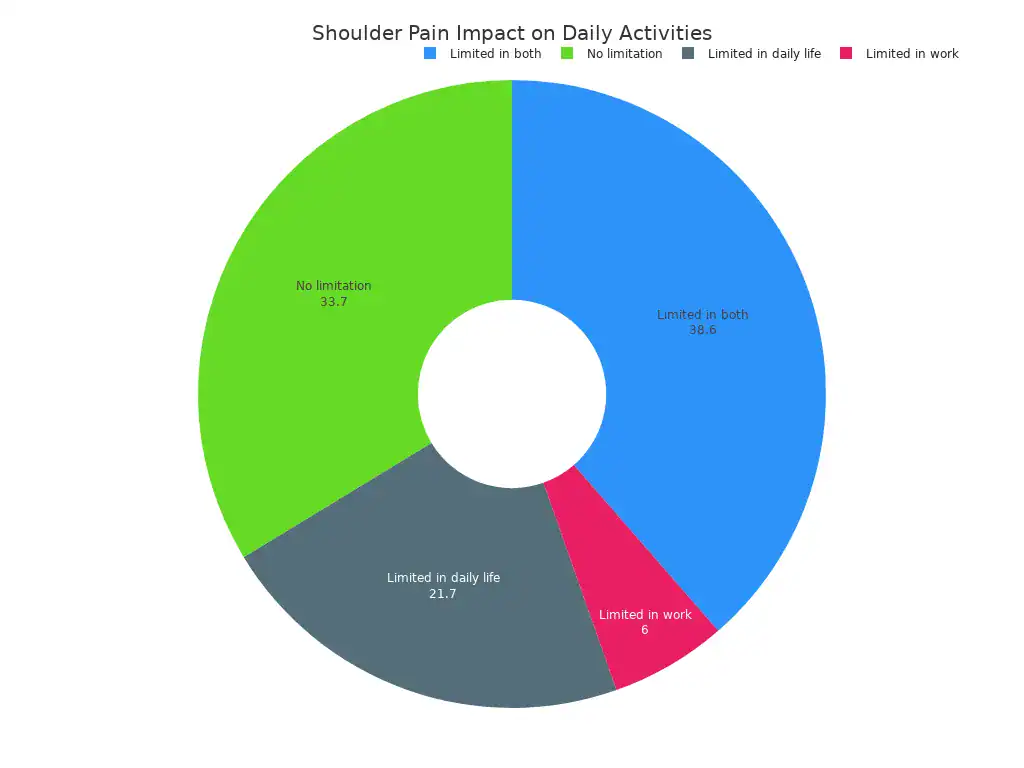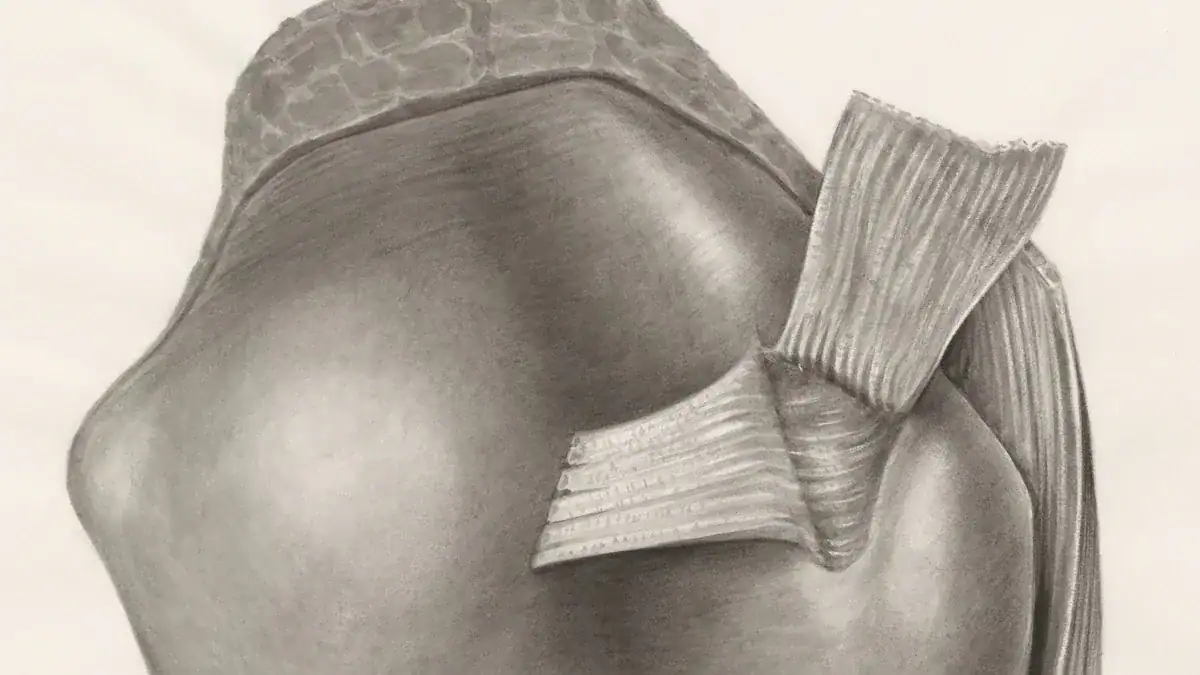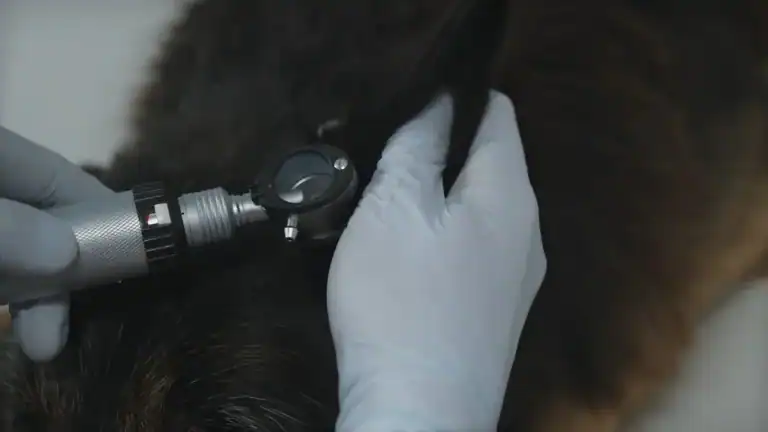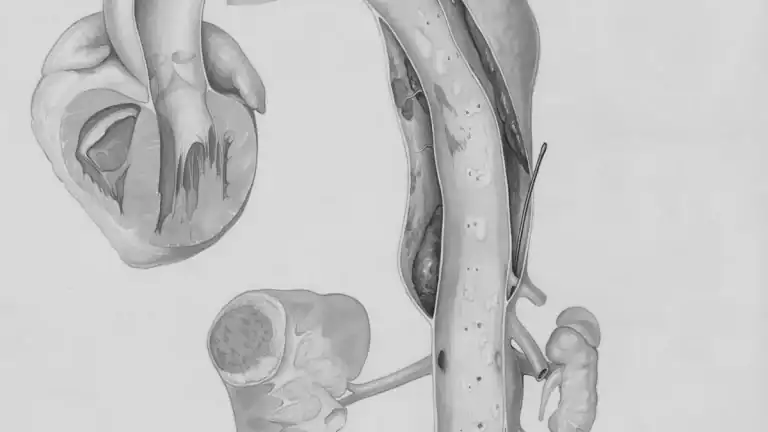
Experiencing shoulder pain when lifting the arm is a common and often disruptive issue. Many people face significant limitations due to this discomfort.

You want to quickly identify the cause of your shoulder discomfort. While many conditions can affect your shoulder, understanding key symptoms guides your initial self-assessment. It also helps you know when to seek professional medical help. This post provides a structured approach to understanding potential causes and next steps for your shoulder.
Key Takeaways
Pay attention to where your shoulder hurts and what the pain feels like. This helps you understand the problem.
Rotator cuff issues, like tendinitis or tears, are common causes of shoulder pain when lifting your arm.
Other problems like bursitis, frozen shoulder, or labral tears can also cause shoulder pain.
Watch for signs like weakness, instability, or pain during certain movements to help identify the cause.
See a doctor right away if you have sudden, severe pain, cannot move your arm, or have numbness.
Pinpointing Pain Location and Type

Understanding your pain starts with observing it closely. You can begin to identify the cause of your shoulder pain by noting where it hurts and what it feels like.
Where Does Your Shoulder Hurt
Think about the exact spot where you feel the discomfort. Is it at the front, side, or back of your shoulder? Does the pain travel down your arm?
Deep pain inside your shoulder, especially when you raise your arm overhead, might suggest a SLAP tear. This involves the labrum, a cartilage rim in your shoulder joint.
If you feel pain when lifting or moving your arm, especially overhead, you might have shoulder impingement syndrome. This happens when tendons or fluid-filled cushions get pinched in your shoulder.
Pain and weakness that increase when you lift your arm overhead can point to a rotator cuff tear. This is a rupture in one of the tendons that helps you raise your arm.
Pain at the front and top of your shoulder, particularly during movements like bench pressing, could indicate Weightlifter’s Shoulder (AC Joint Osteolysis). This involves small fractures in your collarbone.
If you experience pain and a catching sensation when lifting your arm, you might have loose bodies in your shoulder. These are small pieces of bone or cartilage trapped in the joint.
Describing Your Pain Sensation
What kind of sensation do you feel? Is it sharp, dull, aching, burning, or do you hear a clicking sound?
Sharp shoulder pain often occurs with specific movements. This can be a sign of shoulder impingement syndrome or frozen shoulder. If you feel sharp pain at the front and top of your shoulder, especially when reaching overhead, it might be AC joint arthritis.
A dull, deep, and constant aching pain can be hard to pinpoint. This type of pain often suggests a rotator cuff tear, rotator cuff tendinitis, or even shoulder arthritis. It can also be a symptom of a SLAP tear.
A burning pain in your shoulder often indicates inflammation. Conditions like shoulder bursitis, rheumatoid arthritis, or an infection can cause this warm, burning sensation. This pain can also travel down your back and is often linked to nerve problems.
Shooting or radiating pain travels down your arm or up your neck. This type of pain often comes from damaged or pinched nerves. You might also feel numbness, pins-and-needles, or a burning sensation. A pinched nerve or brachial plexus injury can cause this. Rotator cuff problems can also cause shooting pain in your upper arm.
Clicking or popping sounds with pain can also be a sign of a labral tear or loose bodies in the joint.
By carefully observing these details, you can gather important clues about your shoulder discomfort.
Common Causes of Shoulder Pain: Rotator Cuff Issues

Your shoulder has a group of muscles and tendons called the rotator cuff. These parts work together to help you lift and rotate your arm. When you feel shoulder pain, especially when lifting your arm above your head, rotator cuff problems are often the reason.
Rotator Cuff Tendinitis and Impingement
Rotator cuff tendinitis is a condition that affects the tendons and muscles that move your shoulder joint. It means these tendons are inflamed or irritated. Doctors also call this condition shoulder impingement syndrome. This happens when the rotator cuff tendons get pinched by the shoulder blade. These tendons and muscles are very important for keeping your shoulder joint stable.
This condition can cause pain, weakness, and make it hard to move your arm. You might feel pain or weakness when you raise your arm above your head or away from your body. You could also notice a catching or grating feeling in your muscles when you rotate or lift your arm. Sleeping on the side with the affected shoulder can be difficult because of the pain.
Other signs of shoulder impingement syndrome include:
Pain, especially when you reach or throw overhead.
Stiffness in your shoulder.
Tenderness when you touch the area.
Weakness in your shoulder.
The pain can be sharp and stay in one spot during activity. It can also be a dull, spread-out pain when you are resting, especially when you lie down.
Sometimes, you might feel tingling. This usually stays in your shoulder but can go down your arm. However, tingling can also mean you have a pinched nerve in your neck.
Repetitive overhead activities, sports injuries, and normal aging can all cause rotator cuff tendinitis and impingement.
Rotator Cuff Tears
A rotator cuff tear means one or more of the tendons in your rotator cuff has ripped. This can be a small tear or a complete rupture. Tears often cause pain that radiates down your arm, stiffness, and pain that gets worse with overhead movements.
Many things can cause a rotator cuff tear. Sometimes, it happens suddenly from an injury. For example, you might fall on an outstretched arm or lift something too heavy with a jerking motion. These are called acute tears. They can happen with other shoulder injuries.
More often, tears develop slowly over time. This happens because of wear and tear on the tendons as you get older. Doctors call these degenerative tears. Several factors contribute to these tears:
Age: This is the biggest factor. Tendon wear is common in people over 40.
Repetitive stress: Doing the same shoulder motions over and over can cause tears. This happens in sports like baseball, tennis, rowing, or weightlifting. It also affects people with jobs that require frequent overhead arm movements, such as painters or carpenters.
Lack of blood supply: As you age, less blood flows to your tendons. This makes it harder for them to repair themselves naturally.
Bone spurs: Sometimes, extra bone grows on your shoulder blade. These bone growths can rub against and weaken your rotator cuff tendon. This is a form of shoulder impingement.
Genetics: Rotator cuff problems can run in families.
Smoking: Smoking is bad for tendon health and healing.
Obesity: Being overweight can lead to muscle weakness and more stress on your tendons.
Medical conditions: Conditions like type 2 diabetes, high blood pressure, and inflammatory disorders (such as rheumatoid arthritis) are linked to more tears.
Other Frequent Causes of Shoulder Pain
Beyond rotator cuff issues, several other conditions can cause your shoulder pain when you lift your arm. Understanding these can help you pinpoint the problem.
Bursitis and Inflammation
Bursitis is a common cause of shoulder pain. It happens when small, fluid-filled sacs called bursae become inflamed. These bursae act as cushions between your bones, tendons, and muscles. They help reduce friction when you move.
Shoulder bursitis often results from overload, trauma, an inflamed joint, or age. The bursa sits between structures like muscles and bones. When this bursa swells, it causes pain.
Here is what happens with shoulder bursitis:
Swelling and redness occur between the top of your arm bone and the tip of your shoulder.
This area contains your rotator cuff tendons and the bursa, which protects these tendons.
Normally, your tendons move freely. If the space narrows, it irritates and inflames your tendons and bursa.
Inflammation causes swelling, which further reduces the space for movement.
Your tendons and bursa then get pinched between the bones with every movement. This leads to impingement.
You might feel a dull ache or stiffness around your shoulder. The pain often gets worse when you move your arm, especially overhead.
Adhesive Capsulitis (Frozen Shoulder) and Stiffness
Adhesive capsulitis, commonly known as frozen shoulder, causes stiffness and restricted movement in your shoulder. This condition develops slowly. It makes your shoulder joint capsule thicken and tighten. This limits your ability to move your arm.
Frozen shoulder progresses through distinct stages:
Freezing Stage: You will notice a gradual increase in pain. This pain can last from six weeks to nine months. As the pain gets worse, your shoulder’s range of motion decreases.
Frozen Stage: During this period, your pain may slowly get better. However, your shoulder remains stiff. This stage typically lasts between four and nine months.
Thawing Stage: In this final stage, your shoulder movement gradually returns to normal. This recovery process can take anywhere from five to 26 months.
Several factors increase your risk of developing frozen shoulder:
Gender: Women are more likely to get frozen shoulder. Hormonal changes, like menopause, may play a role.
Diabetes: This is a major risk factor. People with diabetes have a much higher chance of developing frozen shoulder. Glucose molecules can attach to collagen in the shoulder joint, causing stiffness.
Other Diseases: Thyroid problems, depression, cardiovascular disease, lung disease, and Parkinson’s disease can also increase your risk.
Inactivity: Long periods of not moving your arm, perhaps after an injury, surgery, or stroke, can lead to frozen shoulder.
Low Body Mass Index (BMI): A low BMI is a significant independent risk factor.
Cervical Spondylosis: This neck condition is also a risk factor.
Previous Frozen Shoulder: If you had it in one shoulder, your other shoulder might be affected later.
Labral Tears (SLAP) and Instability
Your shoulder joint has a rim of cartilage called the labrum. This labrum helps keep your arm bone securely in its socket. A labral tear means this cartilage is damaged.
A SLAP tear is a specific type of labral tear. SLAP stands for Superior Labrum Anterior to Posterior. This injury affects the upper part of the labrum. It is precisely where your biceps tendon attaches. Injuries in this area can cause symptoms related to the labrum, the biceps, or both.
You might experience deep pain inside your shoulder, especially when you raise your arm overhead. You may also feel a catching sensation or instability in your shoulder.
Labral tears can happen in several ways:
Acute Trauma: This includes injuries like falling on an outstretched arm, direct blows, or sudden twisting motions.
Chronic Repetitive Overhead Activity: Athletes who do a lot of throwing, like baseball players, often develop these tears.
Degenerative: Tears can also happen due to the natural aging process. You might discover them during evaluations for other conditions.
Biceps Tendinitis
Biceps tendinitis is inflammation of the biceps tendon. This tendon connects your biceps muscle to your shoulder bone. You will typically feel pain at the front of your shoulder. This pain can extend down to your forearm.
Here are common symptoms of biceps tendinitis:
Pain in the front of your shoulder, especially with overhead activities or when you flex your biceps muscle.
Tenderness when you touch the area where the biceps connects to your shoulder.
Reduced range of motion in your shoulder.
Weakness when you try to flex your shoulder or elbow.
Snapping or popping sensations in your shoulder joint.
Pain that gets worse with activities that strain the biceps tendon, such as lifting heavy objects or reaching overhead.
Clicking or audible popping, especially if the biceps tendon is unstable.
Pain at rest and during the night.
Biceps tendinitis often results from overuse. Repeated overhead motions, common in sports like swimming, tennis, or baseball, can cause it. It can also happen from a sudden, serious load on the tendon. Wear and tear from daily activities also contributes, especially as you age. This condition frequently occurs alongside other shoulder issues, such as rotator cuff tears or shoulder impingement syndrome.
Quick Self-Assessment for Shoulder Pain
You can observe your symptoms at home. This helps you understand what might be happening with your shoulder. Pay attention to specific movements that make your pain worse. Also, look for signs of weakness or instability.
Movements That Worsen Pain
Certain movements can tell you a lot about your shoulder issue. You might feel pain when you move your arms above shoulder level. Lifting and reaching movements can cause sudden pain. The pain might radiate from the front of your shoulder to the side of your arm. You may also find it hard to raise your hand overhead. Your shoulder pain often worsens when you lift your arm, especially above your head.
Consider activities that involve keeping your arm in the same position for long periods. Computer work or hairstyling can aggravate your shoulder. Sleeping on the affected arm each night can also cause discomfort. Sports that require repeated overhead arm movements, like tennis, baseball, swimming, or overhead weightlifting, often worsen pain. Working with your arm overhead for extended periods, such as painting or carpentry, can also be problematic. Some exercises like upright shoulder rows, behind-the-neck shoulder presses, battle ropes, overhead lifts, beyond the neck pulldowns, and bench dips can put stress on your shoulder.
Signs of Weakness or Instability
Your shoulder might feel weak or unstable. You may experience persistent pain in the joint. Stiffness can also be a problem. You might feel a grinding or popping sensation within your shoulder joint. Numbness, tingling, or a burning sensation can occur. Tenderness, swelling, and bruising around the shoulder are also possible. You might notice a visible deformity or reduced function.
Sometimes, you feel numbness or tingling in your arm or fingers. This suggests nerve irritation when the joint slips. You might hear clicking, catching, or popping sounds when you move your arm. This indicates your upper arm joint moves in and out of its socket. You may feel your shoulder slipping, like a ‘dead arm’ sensation. It might feel like your shoulder is giving way. You could have a persistent feeling that your shoulder is loose or ‘just hanging there’. Repeated instances of your shoulder giving out or recurrent dislocations are clear signs of instability.
When to Seek Immediate Medical Attention
Some symptoms require immediate medical attention. You should see a doctor right away if you have sudden and severe pain. This is especially true if it follows an injury or trauma. It could mean a fracture, dislocation, or severe rotator cuff tear. Persistent pain and stiffness that lasts for several weeks without improvement also needs evaluation. This could signal frozen shoulder, tendinitis, or arthritis.
You need to seek help if you experience a loss of shoulder function. This includes difficulty moving your arm or a noticeable decrease in strength. Numbness or tingling in your shoulder, arm, or hand suggests nerve compression or damage.
A visible deformity, like a bump or protrusion, indicates a dislocation or fracture. Unexplained swelling and redness, especially with fever, can signal an infection. Systemic symptoms like fever, chills, or unexplained weight loss with shoulder pain also warrant immediate attention. Neurological symptoms, such as radiating pain into your arm or hand, are serious.
If you have a history of cancer, shoulder pain needs evaluation to rule out other issues. Severe and persistent pain, or sudden onset of pain without an apparent cause, also requires prompt medical care. Finally, trauma or injury, or a limited range of motion, means you should see a doctor.
Shoulder pain when lifting your arm is a common problem. Many different issues can cause it. You should pay close attention to your specific symptoms. Note where your pain is and what makes it worse. This helps you understand your shoulder better. Remember, this guide offers quick insights. It does not replace a doctor’s visit. Always consult a healthcare professional. They provide an accurate diagnosis and a personalized treatment plan. This ensures your effective recovery and prevents further problems.




